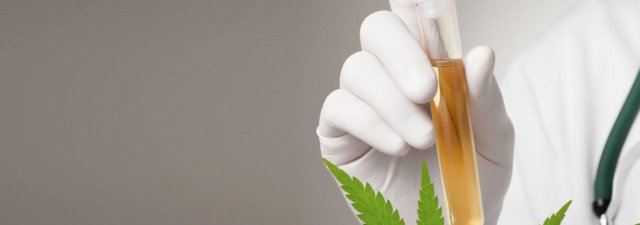Unfortunately, as marijuana laws stand, that euphoric high you feel today could be VERY costly tomorrow. The times may be changing, but it all depends on where you live. A combination of the increased legalization of cannabis and an increasingly tight job market means that certain employers are dropping marijuana screens.
In April 2019, a clinical laboratory Quest Diagnostics report found that the number of American employees and job applicants that tested positive for drugs was the highest since 2005! Marijuana was the #1 drug of choice.
There is no question that strict drug testing is necessary for sectors such as manufacturing, where safety is paramount. However, it seems bizarre to fire someone for using marijuana on their day off in a creative industry. Fortunately, an increasing number of organizations and entire states are using common sense.
Regardless of relaxing cannabis laws around the country, many employers are still implementing pre-hire drug testing.
In 2020, New York City and Nevada implemented laws restricting a company’s ability to screen job applicants for weed use. From January 1, employers in Nevada are no longer able to refuse to hire a prospective employee simply because a drug screen reveals the presence of marijuana.
Around the country, there have been successful legal challenges against this practice. However, it is not all sunshine and roses, as countless firms continue implementing strict drug screening. In California, for example, where marijuana is legal for recreational use, there are still companies that fire employees for enjoying weed during their days off.
Drug Testing Methods
A urinalysis is the most common way to test for the presence of cannabis in the system, but quite a few organizations still rely on saliva testing. A saliva test is quick and easy and involves swabbing the inside of your mouth, and the goal is to detect THC – weed’s famous psychoactive compound.
The method of testing is crucial. THC metabolites (THC-COOH) can be detected in a drug screen for up to three months depending on the type of screening, not to mention a user’s frequency of use, the potency of the herb, and a few other factors. If you are the subject of a saliva test, you’re in better shape than if you must give a urine sample, but you are far from being safe.
What Happens to Marijuana in the Body?
Regardless of how you consume it, THC and over 100 other cannabinoids make their way to your bloodstream. It hits its peak within a few minutes, but within hours, less than two-thirds of the cannabinoids remain in your system. The blood carries the cannabinoids to the liver, which has the task of cleaning your blood. It sends useful components to your body’s various organs and initiates the process of removing toxins.
Once THC gets to the liver, it is broken down into metabolites. THC-COOH is the metabolite that drug tests screen for, and it is typically stored in fatty tissues. The bad news is that THC-COOH is stored in fatty tissue all over the body, including body fat, lungs, kidneys, heart, and liver. Eventually, tiny amounts are released into the body and removed from the system via primarily fecal matter, but also in urine and other bodily fluids such as sweat. For the record, the majority is removed through feces.
THC-COOH is the metabolite that drug tests screen for, and it is typically stored in fatty tissues throughout the body.
The reason why drug tests screen for THC-COOH is because it is eliminated from the body slowly. The more you use weed, the longer it takes for your system to become clear. For example, in a urine test, a heavy marijuana user can carry traces of the metabolite in their system for up to 11 weeks! In contrast, drugs such as ecstasy, cocaine, and oxycodone are removed from the system within a few days.
How Does a Saliva Test Work?
First of all, if you are scheduled to receive a saliva drug test, be grateful that it isn’t a urinalysis. Swab tests are different from urine, hair, and even blood tests, as these all screen for THC-COOH. With saliva tests, the goal is to find the THC itself, which means the window for detection is a lot smaller.
Also known as a ‘cotton swab’ drug test, a saliva screening involves testing for drugs such as marijuana, opiates, ecstasy, PCP, methamphetamine, methadone, and benzodiazepines. The tester takes a sample of your oral fluid by swabbing the inside of your mouth. Unlike an oral HIV test, a saliva test doesn’t involve swabbing the cheeks, although you may get a swab beneath your tongue.
Beneath your tongue lies the parotid glands, also known as our major salivary glands. These glands are wrapped around the mandibular ramus and produce saliva, a fluid that contains the enzymes which enable you to digest your food. Saliva also contains evidence of any drugs you have used recently. Once a sample is taken, it will be checked to ensure it came from a human and is not tampered with.
How Long Does THC Stay in Saliva?
Drug tests look for levels of THC or THC-COOH in the system, measured in nanograms per milliliter (ng/ml). While the threshold is 50 ng/ml for a urinalysis, it is just 25 ng/ml for saliva tests in most cases. Your employer may pay for sophisticated lab testing capable of picking up 0.5 ng/ml, but that’s incredibly unlikely unless you’re in a role that involves handling sensitive information.
The bad news is that there is no ‘standardized’ timeframe where THC can be detected in your saliva. If you are a one-time user, it will likely have left your system within 24 hours. However, an advanced saliva test can pick up THC for up to three days. A study by Lee and Huestis, published in Drug Testing and Analysis in August 2015, suggested that THC could be found in the saliva tests of chronic marijuana users up to 29 days after their last use.

You can purchase saliva tests to use at home. We have seen devices capable of providing results in under 12 minutes that detect THC for up to 24 hours after your last smoke, with a 25 ng/ml cutoff.
If you use CBD, there is no reason to be concerned because drug screenings don’t look for this non-intoxicating cannabinoid. Also, there isn’t even a standard method available that can measure the level of CBD in the body. However, it all depends on the quality of the product you use.
In the United States, all CBD products must legally have 0.3% THC or less. Some isolates have no THC, and those are safest if you have a drug screen coming soon. If the CBD you use contains THC, there’s a slight chance you could test positive in a saliva test.
THC in the Saliva: Factors Affecting Detection Time
Unfortunately, we can only provide generic detection times because there are so many factors to consider. Here is a quick list regarding how long does THC stay in saliva:
- The stronger the weed (in terms of THC content), the longer it stays in your system.
- The more frequent your use, the longer the detection time.
- If you are fortunate enough to have a fast metabolism, toxins are processed and flushed from the body quicker.
- If you are generally healthy, you will detox faster. If you have a low body fat percentage, you will process the drug more rapidly.
- If you consume other drugs or supplements, there are more toxins for the body to eliminate. It has a major impact on how quickly THC is flushed from the body.
How Do I Pass a Saliva Test?
Fortunately, it is a LOT easier to pass a saliva drug screening than a urinalysis. If you’ve ever read guides on how to pass urine tests, you’ll know that it normally involves drinking foul concoctions and urinating a lot. The downside to an oral drug test is that you can’t cheat it as you can with a urinalysis, whereas people can use fake or synthetic urine in a pinch.
You can’t cheat an oral drug test, unlike with a urinalysis, where people can use synthetic or fake urine.
The upside is that you can pass a saliva test with just a few hours’ notice, a feat that’s incredibly difficult if urinalysis is sprung on you. It should go without saying that short-term abstinence will greatly aid your cause. Remember, saliva tests rely solely on finding THC in the lining of your mouth.
While THC metabolites can remain in your system for days or even weeks after your last usage, a saliva test can’t detect it. Generally speaking, staying away from weed for 24 hours may be enough, although it could be beneficial to ‘just say no’ for up to a week if you know a drug screening is on the horizon.
Brush Your Teeth Several Times Before a Saliva Test
Another obvious tactic is to brush your teeth repeatedly. It isn’t uncommon for an individual to brush their teeth three to four times in the last few hours before a saliva test. Make sure you focus on your gums, and especially the tongue. Invest in a tongue scraper and get to work. While thorough brushing will help, it may not be enough if you don’t carefully remove any lingering food particles. Make sure you floss! It is also a good idea to rinse with mouthwash or an antiseptic.
Unfortunately, you still need to consume an adequate amount of fluid in the lead-up to the test. On the plus side, you don’t have to worry about producing a suspiciously diluted urine sample. Be sure to slosh the water around in your mouth and spit out the first mouthful. There is a suggestion that chewing ice also helps reduce THC in the mouth, but there is no scientific evidence to support this.
Try Consuming Fatty Foods or Using Mouthwash
Another tip is to eat fatty food because THC is a fat-soluble substance that quickly absorbs into lipids. Eating fatty foods boosts the THC absorption rate. As a result, the THC-COOH levels in your system increase, but since a saliva test looks for THC and not THC-COOH, you increase your chances of passing the test. There are also special mouthwashes on sale for less than $20, which you can use to pass a saliva test at an hour’s notice. Whether they are more effective than OTC mouthwashes is anyone’s guess.
Final Thoughts on Detecting THC in Your Mouth
Although it is less likely than in years gone by, there is still a chance that your employer will demand a drug test. Alternatively, there may be a job that you really want where a pre-employment screening is mandatory. In either case, if you’re a marijuana user, you have to find ways to beat the test, or else you can kiss the job goodbye.
Although a saliva test is an inconvenience, you have a much better chance of passing it than if you are subjected to a urinalysis. The cutoff point is lower, but as it tests for THC rather than the THC-COOH metabolite, it is easier to pass it.



![What Is Powdered Urine? [Does It Really Work?]](https://wayofleaf.co/wp-content/uploads/2019/06/wol_what-is-powdered-urine-640x225.jpg)

![How to Pass a Mouth Swab Drug Test [Complete Guide]](https://wayofleaf.co/wp-content/uploads/2019/03/wol-how-to-pass-a-mouth-swab-drug-test-640x225.jpg)






